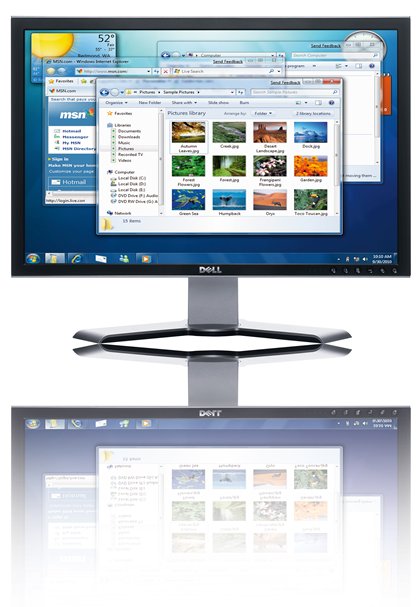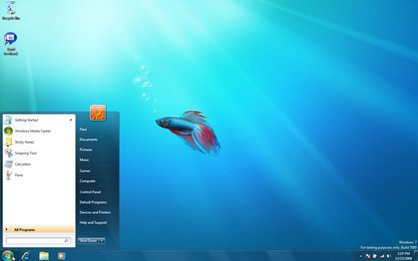The PC of 2010
The dramatic changes coming to PC hardware in the year ahead
Your gaming PC is a work-in-progress. Just when you’re happy with a quad-core, SLIed-up beast, Intel redo their entire CPU structure and enter the graphics card market. This year we’re going to see monitor prices plummet, a new version of Windows supporting a touch screen interface, and hard drive tech repurposed from USB drives. There’s a whole new world of hardware on its way. Here’s what you can expect from 2009.
Giganto-monitors
The cost of monitors continues to fall off a cliff. Given that you can buy a 32-inch TV for around $300 or £200, a 20-30 inch monitor is more affordable than you might think. Already, 20-inch widescreen models go for barely more than $150 (£100). Low-end 24-inchers can be had for around the $260 (£180) mark.

Two things to bear in mind. Firstly, the big screens generally run at a resolution of 1920x1200, and running games at a lower res will mean a blurry picture. So, make sure your graphics card has the grunt for it. Secondly, there’s a silent screen panel format war being waged, with each monitor falling into one of three general categories: TN, PVA or IPS. Each has a fatal enough flaw that the dream, all-purpose monitor doesn’t quite exist yet. TN is best for gaming due to faster response times, PVA for movies with its better contrast ratios and viewing angles, and IPS for desktop work because of its excellent colour reproduction.
Touchscreen PCs and Windows 7
One goal of Windows 7 is touchscreen-friendliness (yes, comparisons to the iPhone’s swipey gestures and virtual buttons have been made). MS aren’t always reliable trendsetters – tablet PCs, anyone? – but this one really is looking likely, more so for laptops than for desktops. It won’t hit big until 2010, but it looks certain to be part of the long-term future of PCs.

If you’re looking for big, sweeping changes in Windows 7 (that’s the official name) you won’t find them – this is still Windows, but as a happy side-effect of that MS are promising we won’t suffer a new round of software and hardware compatibility problems. Anything that works on Vista should work on 7. Perhaps more importantly, they’re aiming to improve performance, one of Vista’s major failings. In the words of one William Gates, Esq, Windows 7 will: “...be lower power, take less memory, be more efficient, and have lots more connections up to the mobile phone, so those scenarios connect up well to make it a great platform for the best gaming that can be done.” Hmm. A beta is due in the next few months, the full release mid-year.
Sign up to the GamesRadar+ Newsletter
Weekly digests, tales from the communities you love, and more


